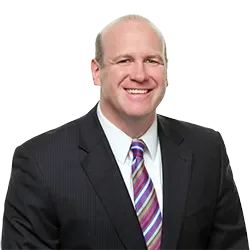Press Release
U.S. Employers Expect Significant Impact From Regulatory Shifts on Immigration and Inclusion, Equity & Diversity, Littler Survey Shows
(May 7, 2025) – As U.S. employers adapt to wide-ranging executive orders, sweeping changes at federal agencies and a growing patchwork of state and local regulations, they are bracing for further challenges over the next year—both from a workplace management and legal perspective.
That’s according to the 13th Annual Employer Survey released today by Littler, the world’s largest employment and labor law practice representing management. The survey draws on insights from nearly 350 in-house lawyers, business executives and human resources professionals—36% of whom hold C-suite positions—to understand the most pressing workplace concerns among executives in the current environment and how they are navigating them.
IE&D Scrutiny and Immigration Policy Emerge as Top Concerns
Most employers (84%) say that changes to workplace regulations and policies surrounding inclusion, equity and diversity (IE&D) will impact their businesses during the first year of the Trump administration, followed by changes related to immigration policy (75%) and LGBTQ+ protections in the workplace (58%).
The business impact carries over to prospective litigation, with nearly half of employers (45%) concerned about litigation related to IE&D practices, almost double the 24% of respondents who expressed concern in last year’s survey. Yet despite the challenges that employers face related to policy changes and litigation risk, 45% of respondents report that their organizations are not considering new or further rollbacks of their IE&D programs in response to executive orders issued by the Trump administration. This data is consistent with the findings of Littler’s 2025 IE&D C-Suite Survey Report, released in February, when 49% of respondents said the same.
“With IE&D programs facing existential threats and unprecedented scrutiny from federal agencies, we’re seeing many employers wisely step back and analyze their IE&D practices with an eye toward compliance and effectiveness,” said Jeanine Conley Daves, Littler shareholder and member of the firm’s IE&D Consulting Practice. “Yet even as some organizations modify their programs in response to the administration’s priorities, it’s unlikely that IE&D will disappear any time soon. It remains an important talent recruitment and retention strategy at many organizations.”
On the immigration front, 58% of employers are concerned about potential staffing challenges resulting from the administration’s immigration policies. Nearly three-quarters (70%) expect enforcement by U.S. Immigration and Customs Enforcement (ICE)/Homeland Security Investigations and the Department of Homeland Security to have a significant or moderate impact on their workplaces over the next 12 months.
“With the expected uptick in worksite enforcement, it is important for employers to proactively conduct reviews to check that I-9 forms are up to date, that they know where they’re located, and that there is a crisis management team in place in the event of a site visit from ICE or another government agency,” said Jorge R. Lopez, Littler shareholder and chair of the firm’s Immigration and Global Mobility Practice Group. “At the same time, businesses should be cognizant of changing policies on legal immigration and the resulting challenges to maintaining a steady workforce to meet business objectives.”
Federal Agency Enforcement Expected to Loosen, But States Continue to Drive Employment Law Change
This year’s survey shows that while employers anticipate heightened legal and regulatory scrutiny in areas like immigration and IE&D, they expect less scrutiny in others.
Under a more management-friendly National Labor Relations Board (NLRB), for instance, employers’ level of concern about NLRB enforcement fell considerably, to 56% in this year’s survey from 73% in 2024. Additionally, fewer than half of respondents expect changes to workplace policy and regulation related to wage and hour/pay practices (43%) and artificial intelligence (AI) use in the workplace (42%) during the first year of the Trump administration.
State and local policymakers, however, are expected to fill the gap. Most respondents (82%) anticipate an increase in legislation and regulation at the state and local levels that will impact their workplaces in the year to come.
“From AI to LGBTQ+ rights to wage and hour practices, state and local policymakers across the country are increasingly introducing regulation that is in tension with federal law,” said Shannon Meade, Executive Director of Littler’s Workplace Policy Institute®. “As employers wait for the courts to provide clarity, they must navigate complex compliance challenges, which in turn requires staying hyper-vigilant about monitoring new developments and maintaining best practices.”
Shifting Landscape for AI, In-Person Work and Employee Accommodations
Against the backdrop of a more lax enforcement regime and less stringent regulation from the Trump administration, 31% of employers—and 47% of technology organizations—are increasing or planning to increase their use of AI in the workplace. Yet 31% of respondents also say that their organizations still do not have any policies or guidelines to oversee employee use of this technology.
“Even as federal enforcement actions wane, the lack of specific policies governing employee use of AI could pose a multitude of other risks for employers—from intellectual property loss to reputational damage to declines in the employee and customer experience,” said Niloy Ray, Littler shareholder and a core member of the firm’s AI and Technology Practice Group. “It’s important, then, that AI governance be the provenance of not just IT but several other functions within an organization, including leaders who understand IP, privacy, the procurement cycle and broader legal and employee-side risks.”
As for employee work schedules, 48% of respondents whose organizations have positions that can be performed remotely say they have increased in-person work requirements over the past 12 months or are considering doing so. Most are focused on increasing the number of required in-person workdays within their hybrid schedules, with 29% having already done so and 12% considering such a change.
Among respondents whose organizations have increased their in-office requirements, 56% have seen more requests for remote work accommodations. Amid this influx, 50% are concerned about workplace accommodation lawsuits over the next year.
“For companies looking to increase in-office work, it’s important to have a plan in place for the likely influx of remote work requests,” said Alexis C. Knapp, Littler shareholder and co-chair of the Leaves of Absence and Disability Accommodation Practice Group. “In managing these requests and communicating processes, it’s also important to distinguish between legal obligations to provide reasonable accommodations to employees with disabilities and employee requests for flexibility that do not involve a legally binding accommodation obligation.”
In looking at the specific areas where employers are seeing increased requests for leaves of absences and/or accommodations, 70% have seen a rise in requests related to mental health conditions, building on the already high percentage of employers (74%) who were seeing an increased volume of such requests in last year’s survey. A large share of respondents also note increases in requests for intermittent/reduced schedule leaves (45%) and extended/open-ended leaves (26%). These types of leaves can be particularly difficult for businesses to manage, as they often come without much notice, occur at irregular intervals and/or do not have defined end dates.
With religious expression issues increasingly entering the workplace in recent years, 45% of respondents say they have received requests from employees over the past year to adjust work requirements and/or environments to allow for the practice of religious beliefs. Employers may continue to see an uptick in such religious accommodation requests over the next year as the Trump administration and the EEOC have signaled a focus on religious protections.
Download the Littler® Annual Employer Survey Report, 2025
About Littler
With more than 1,800 labor and employment attorneys in offices around the world, Littler provides workplace solutions that are local, everywhere. Our diverse global team and proprietary technology foster a culture that celebrates original thinking, delivering groundbreaking innovation that prepares employers for what’s happening today, and what’s likely to happen tomorrow.













